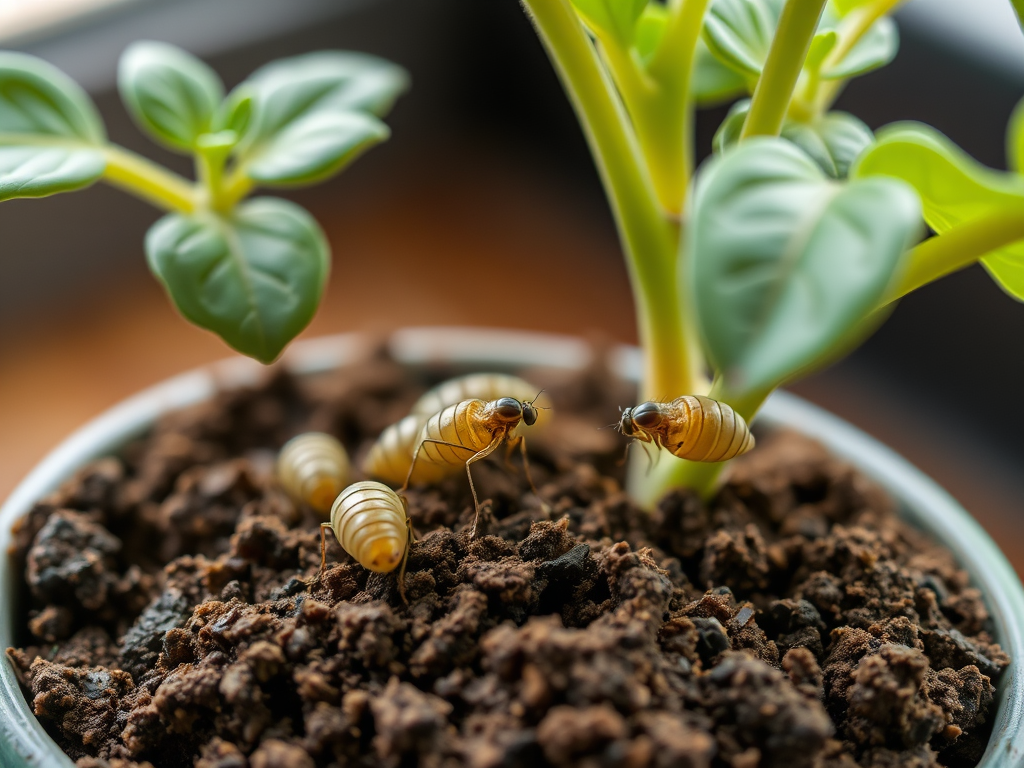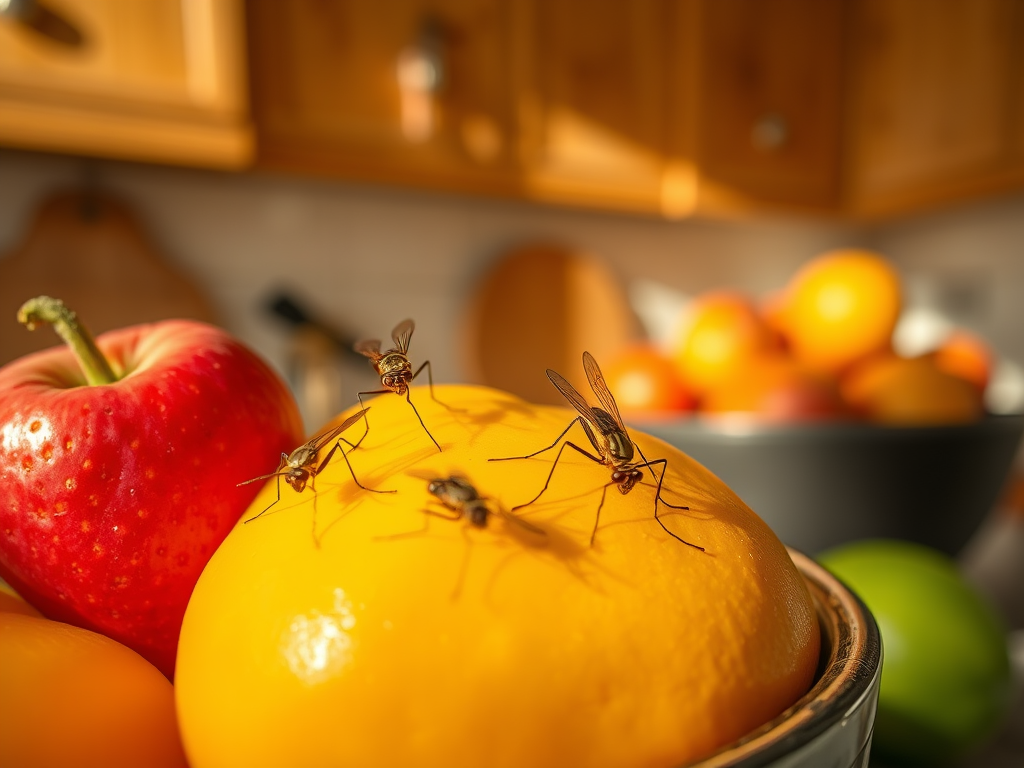Gnats may seem like insignificant pests, but their impact on our surroundings can be quite notable. These tiny insects often emerge in large numbers, causing irritation and disruption, especially in kitchens and gardens. If you’ve ever wondered why these nuisances appear seemingly out of nowhere, understanding their life cycle is key. Knowing their behaviors and tendencies allows you to implement effective strategies for control, including optimal trap placement. With informed decisions, you can reclaim your space from pesky gnats.
A gnat’s life is divided into several distinct stages: egg, larva, pupa, and adult. Each phase in the life cycle offers insights into their patterns of behavior, feeding habits, and preferred environments. By delving into these stages, one can understand when and where to place traps for maximum efficacy. Not only does this knowledge empower you, but it also enhances your ability to create a gnat-free sanctuary in your home or garden.
The Gnat Life Cycle

The first stage begins when gnats lay their eggs, usually in moist environments where food sources are abundant. This is followed by the larval stage, in which they develop and feed on organic matter. After a period of growth, they enter the pupa stage, emerging later as adults ready to reproduce. Understanding these stages can be immensely beneficial for anyone looking to manage gnat populations effectively.
Egg Stage
Eggs are typically deposited among decaying organic matter or moist soil, where conditions are ripe for the larvae to thrive. A female gnat can lay a significant number of eggs at once, indicating that controlling this stage is crucial for limiting future populations. They prefer temperatures around 64 to 80 degrees Fahrenheit for optimal egg development.
Larval Stage
Once the eggs hatch, the larvae begin to feed immediately. They consume decaying plant material and other organic substances in their environment. Environmental factors such as humidity and the availability of food sources play a significant role in their growth and survival. The larval stage can last for several days to several weeks, depending on the species and environmental conditions.
Pupation
During the pupal stage, larvae encase themselves in a protective shell, transitioning into adult gnats. This phase is crucial; strong environmental conditions will facilitate a healthy emergence of adult gnats. The duration of this stage can vary, influenced by temperature and humidity. Observing changes in your environment during pupation can help you anticipate new gnats.
Adult Stage
Adult gnats have distinct physical traits, including long legs and delicate wings. Their primary objective upon reaching maturity is reproduction. Adult gnats typically live for about a week to several weeks, during which they will mate and lay eggs, thus continuing the cycle. Their presence in your space can be troublesome, making effective trapping essential.
| Gnat Life Cycle Stage | Duration | Ideal Conditions |
|---|---|---|
| Egg | 1-3 days | Moist, warm environments |
| Larva | 5-14 days | Decaying organic matter |
| Pupa | 3-7 days | Stable, humid conditions |
| Adult | 7-30 days | Fresh food sources |
Factors Influencing Gnat Life Cycle

Several external factors significantly affect the gnat life cycle. Temperature, humidity, and availability of organic material directly influence the different stages of development. For instance, warm, wet conditions promote rapid growth, while cooler, dryer climates can slow it down. Understanding these influences enables effective control measures. Below are key factors to consider:
- Temperature: Warmer climates accelerate the life cycle.
- Humidity: Higher humidity levels support consistent reproduction.
- Food Sources: Availability of organic matter is critical for larval survival.
Effective Trap Placement Strategies
Utilizing the knowledge of the gnat life cycle can significantly enhance your trap placement. Specifically, identifying gnat activity hotspots in your home or garden helps focus your efforts effectively. Ideally, place traps in areas with high moisture or organic matter, such as near potted plants, fruit bowls, or garbage bins. This will increase the likelihood of capturing adult gnats.
There are several types of traps available for controlling gnat populations. Understanding the strengths and weaknesses of each type is essential for making an informed choice. Some effective trap types include:
- Sticky Traps: These capture adult gnats on adhesive surfaces.
- Liquid Traps: These entice gnats with attractants, drowning them in a liquid solution.
- DIY Traps: Household items like vinegar and soap can also effectively trap gnats.
Maintaining a Gnat-Free Environment
Preventing future gnat infestations requires ongoing diligence. Maintaining cleanliness in your living and outdoor spaces is critical to reducing breeding grounds. Here are some helpful tips to keep gnats at bay:
- Regularly dispose of overripe fruits and vegetables.
- Keep drains and garbage disposals clean to manage organic buildup.
- Water potted plants only when necessary to avoid excess moisture.
Conclusion
Successfully managing gnat populations starts with a comprehensive understanding of their life cycle. By grasping the nuances of their development, you can implement effective trap placements tailored to their habits. This not only aids in immediate pest control but also helps to mitigate future infestations. With consistent practices and informed strategies, you can enjoy a gnat-free environment in your home or garden.
Frequently Asked Questions
- What are the main types of gnats? Fruit flies and fungus gnats are the most common types.
- How long does the gnat life cycle take? The life cycle can take as little as 1-2 weeks under optimal conditions.
- What conditions attract gnats? Moist, warm environments with decomposing organic matter attract gnats.
- How can I tell if I have a gnat infestation? Signs include seeing adult gnats flying around and larvae in soil or food sources.
- Is it possible to eliminate gnats completely? While you may not eliminate them entirely, effective strategies can significantly reduce their numbers.



